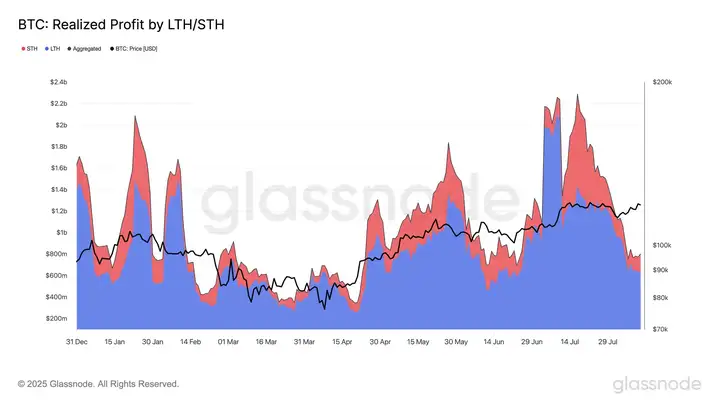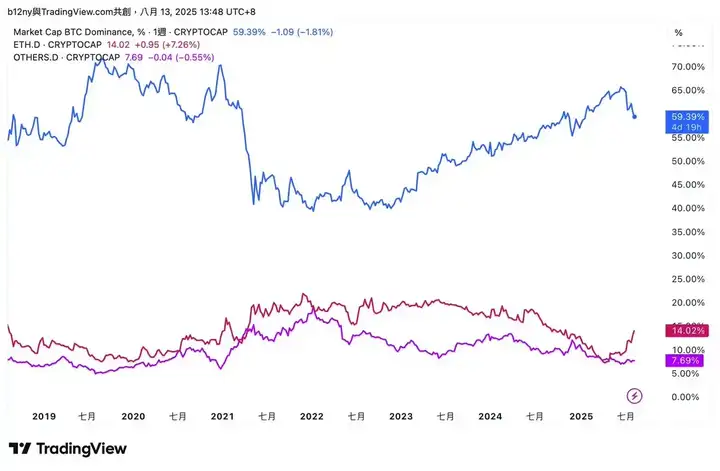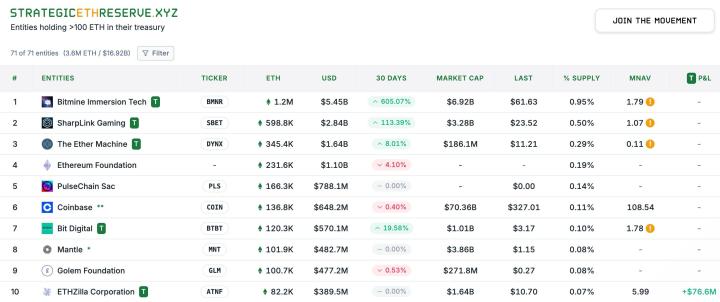Bitcoin surged after the US stock market closed, breaking through $123,000 and setting a new historical high, while ETH also significantly increased in price due to massive institutional entry, breaking through $4,700 during the US stock market opening last night, not far from a new high. This wave of growth also had a chain reaction on the stock market, especially for companies holding large amounts of Ethereum, like BitMine and SharpLink.
VX:TZ7971
Meanwhile, another crypto stock went public, with the cryptocurrency exchange Bullish (NYSE: BLSH) soaring 143% on its first day of listing on the New York Stock Exchange. Bullish's IPO price was $37 per share, higher than the expected range of $32 to $33, ultimately raising $1.11 billion, with the company valued at $5.41 billion, reportedly oversubscribed more than 20 times. Currently, the market situation involves listed companies boosting stock prices through crypto hoarding, then raising funds through various methods to drive up crypto prices, continuously repeating this operation for profit.
As both the stock and crypto markets are rising, tonight might bring some volatility because the US will release the Producer Price Index (PPI) and unemployment numbers. The CPI data released the day before was favorable for rate cuts, but the market needs more data to assess the magnitude and frequency of cuts. Tonight's data will be another reference indicator. Currently, the September rate cut can be said to be a result of Trump's incitement, so even recent negative news might be ignored by the market, and the August upward trend should at least continue until the eve of the September monetary policy meeting.
Theoretically, when crypto prices approach historical highs, they are often accompanied by heavy profit-taking selling pressure, but this time the situation is unusually calm—— glassnode data shows that investors' average daily cash-out amount is less than $750 million, far lower than the peak levels in January and July of this year.
The on-chain data institution glassnode points out that in January, Bitcoin's daily average realized profit reached $2 billion; in July, when the price touched the historical high of $123,000, the market also experienced a similar scale of profit-taking wave. Therefore, this current calmness is particularly intriguing.

glassnode's "Realized Profit" indicator calculates the daily Bitcoin profit-taking based on the price at the "last transfer" compared to the "previous transfer" price.
glassnode further divides holders into "Long-Term Holders (LTH)" and "Short-Term Holders (STH)" to observe subtle changes in investor behavior.
Data shows that "Long-Term Holders" have almost always been the main force in market profit-taking. However, in July this year, when Bitcoin's market was booming, profit-taking selling pressure from "Short-Term Holders" rapidly increased in volume. It is speculated that these were likely short-term investors who entered the market when Bitcoin plummeted to $76,000 during the March "tariff panic" sell-off.
Now, both long-term funds and short-term buyers choose to remain inactive when Bitcoin approaches its historical high—— this reluctance to sell is undoubtedly a warm current for the bulls.
If this stabilizing force continues, the market not only hopes to maintain its current gains but may also be poised to surge to new heights, further pushing Bitcoin to challenge new records.
Will the Next Wave Be Altcoins?
BTC.D has shown a clear downward trend, falling from its previous high point to around 57.7%. Combined with ETH.D's trend, this is a typical capital rotation signal: market funds are beginning to withdraw from relatively stable assets and pursue higher-risk, higher-potential return targets. Historically, BTC.D's continued decline has often been one of the necessary conditions for the Altcoin season to start.
ETH.D not only represents Ethereum's strength but is often viewed as the leader of the entire Altcoin market. Currently, ETH.D is performing strongly, with its dominance rate recovering to 14.0%, and accompanied by ETH's rapid price increase, ETH/BTC rose over 4% in 24 hours, indicating a clear trend of funds flowing from Bitcoin to Ethereum.

This trend follows the classic script of capital rotation: in the first stage, BTC stagnates or even falls back, and funds begin to flow into ETH; ETH's rise not only boosts market confidence but also creates conditions for more liquidity to be injected into the Altcoin market.
The next thing to watch is OTHERS.D (market cap percentage of small and medium-sized Altcoins outside of BTC, ETH, etc.). Currently, OTHERS.D is still in a long-term bottom sideways movement and has not seen an explosive growth like ETH.D, meaning fund heat is still concentrated on a few top assets like ETH. Although SOL also had a significant rise today, making the capital rotation more apparent, it has not yet fully spread to the high-risk, small-cap speculative sector.
Looking at these three indicators comprehensively, the market is likely in the early stages of rotation:
Already happened: BTC.D declining, funds overflowing.
Currently happening: ETH.D rising, funds concentrating into ETH.
Yet to happen: OTHERS.D rising, funds spreading to small-cap Altcoins.
If Ethereum breaks through to a new high, there will definitely be a pullback, followed by an opportunity for Altcoin performance. Those with spot holdings can patiently continue holding, while those without positions should wait for the pullback after the new high to enter.






